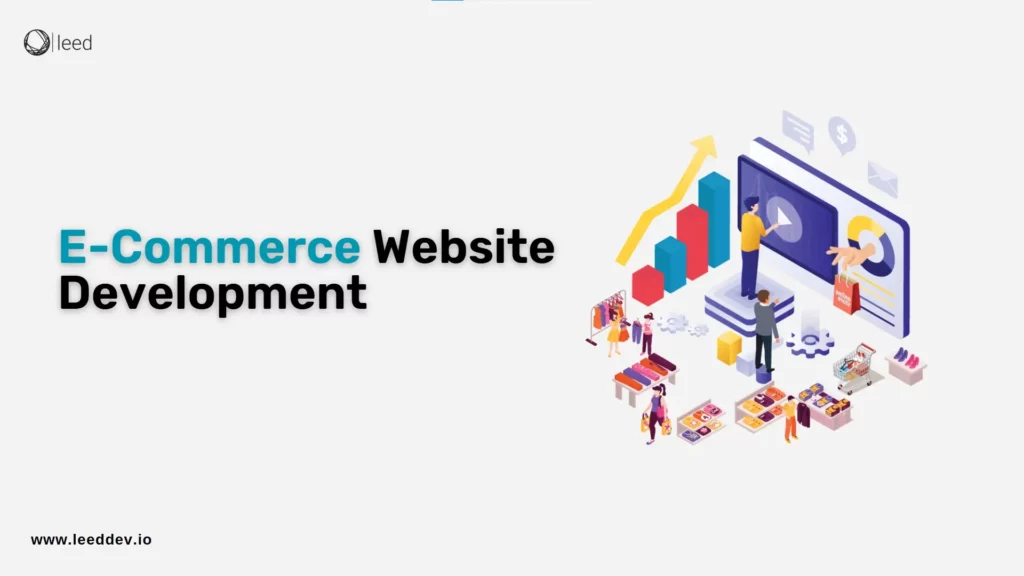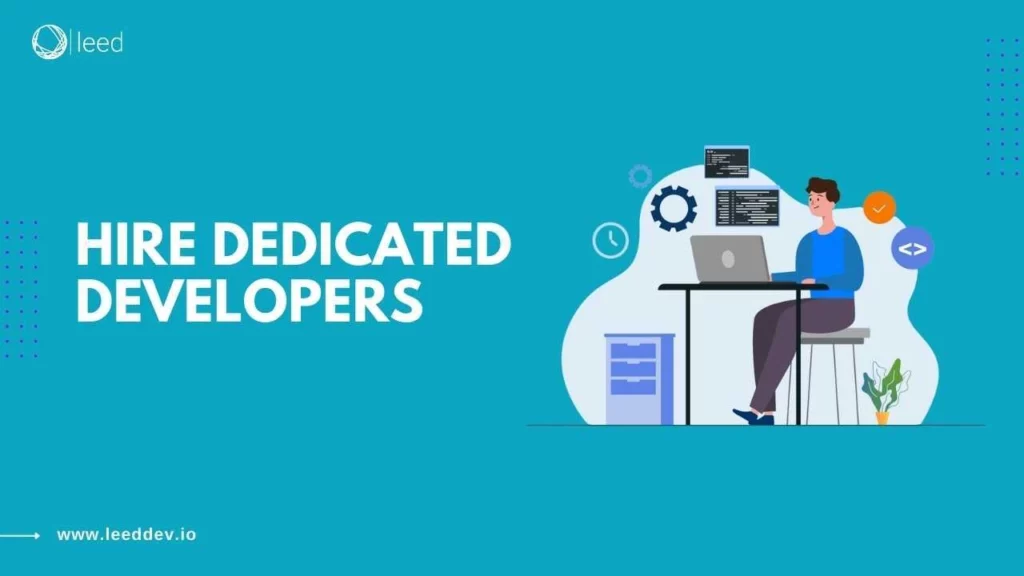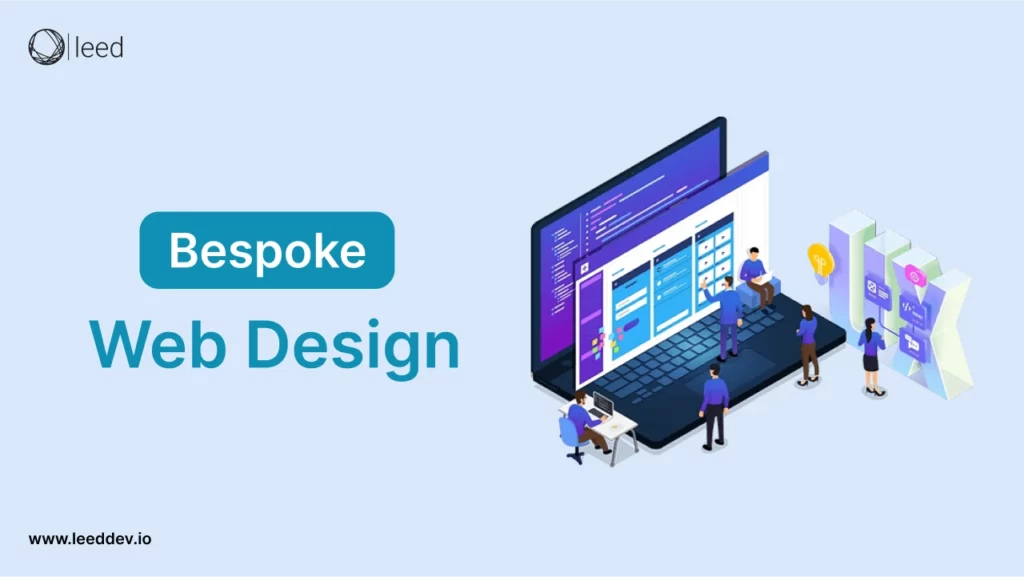With 12 – 24 million ecommerce sites worldwide it’s easy to get lost in the crowd. Key to standing out? Best E-commerce website development. It’s all about how your site functions, looks & responds to user actions. Want to expand your reach to customers all over the world? If so e-commerce website development could be your perfect solution!
E-commerce website development services allows to showcase your products or services online. This makes them accessible to anyone with an internet connection. With over 2.14 billion people shopping online having well-developed ecommerce site is crucial for driving sales and staying competitive.
Did we mention that Leed Software Development is a leading e-commerce web development company that can help you build a successful site? Still waiting? Well than its time to take action and schedule a call right now with us!
What is an e-commerce Website?
E-commerce website is an online platform where businesses can showcase and sell products to customers. E-commerce websites allow customers to browse through products. You can add them to their shopping carts and securely make purchases online.
E-commerce websites typically feature product catalogs, facilitate transactions and shopping cart systems. These websites can range from simple online stores to more complex ecommerce platforms with advanced features. The features might include personalized recommendations, customer reviews and loyalty programs.
Top 3 Options for E-commerce Website Development
When building an ecommerce website, you have three main options:
- Build from scratch (open source): Complete control and customization over every aspect of your site.
- Customize a SaaS solution: Use a pre-built platform like Shopify or BigCommerce, allowing for easier setup with some flexibility.
- Harness MACH architecture: A modern approach using microservices, APIs, cloud, and headless architecture for maximum flexibility and scalability.
Each option offers unique benefits depending on your business needs and goals.
Steps for E-Commerce Website Development
Following are the steps for developing e commerce website
1- Understand Goals & Objectives
For ecommerce web design you need to determine your business goals and objectives. Clearly define your goals. Be clear about what you are hoping to achieve with your website.
By identifying goals you can create a tailored website to meet your business needs. You also need to know your target audience & market. So you can create a website that speaks directly to them and addresses their pain points.
Start by asking yourself why you want to sell online. Here are some key questions to guide you:
- What growth do you want to see after launching?
- How will you measure success?
- Are you targeting local or international customers?
- How will you enhance customer lifetime value?
- How many products do you plan to sell?
Defining these aspects will help shape your e commerce strategy effectively.
2- Buy a Domain Name
When choosing your ecommerce business name check for domain name availability. Buying a domain is simple with Shopify but popular domains can sell quickly. If you find an available domain you like consider purchasing it immediately. You can opt for a short-term contract of one to two years if you’re not fully committed yet. Be sure to check available options before finalizing your company name.
3- Platform Options
You don’t have to build your online store from scratch. There are plenty of e commerce solutions available. Each platform has its own pros and cons.
Some popular ecommerce website builders include:
- Shopify: Great for user-friendliness and scalability
- BigCommerce: Ideal for growing businesses with advanced features
- Magento: Highly customizable for larger enterprises
- WooCommerce: Perfect for those using WordPress, offering flexibility with integrations
After purchasing your domain choose a website host that supports your ecommerce platform. Some hosting services requires to design site from scratch while others provide pre-built templates to simplify the process.
4- Know About Your Competitors
Researching your competitors is an important step in e commerce website development. Analyze their websites to see what they are doing well & know their weaknesses. Focus on areas in which you can improve. Look at their pricing strategies and product offerings. Through this you can gain valuable insights that will help you create a website that stands out from the competitors.
5- Design Phase
For e-commerce website development you can choose website template or design a custom website theme. Website templates are pre-designed layouts that can be customized to fit your brand. At the same time custom website themes are designed specifically for your brand.
Finalize your budget and the customization level you require when deciding. Be sure to add high-quality product descriptions and images. This will increase the likelihood of them making a purchase.
6- Development Phase
Build website using a suitable e commerce platform such as WooCommerce or Shopify. During e commerce website development choose a suitable e-commerce platform such as Shopify or WooCommerce. These platforms provide a range of functionalities & features that are essential for creating an effective e-commerce website. Although e-commerce platforms provide many functionalities, you may need custom features and integrations to meet your requirements. So add custom features and integrations as required.
7- Add Products
Ensure that adding and editing product listings is straight forward, and that your inventory syncs across all sales channels. This simplifies operations and helps prevent overselling.
When adding products, focus on:
- High-Quality Product Images: Use clear, appealing images to give customers confidence in their purchase.
- Detailed Product Descriptions: Include all relevant information, such as specifications, sizing, and other important details, especially for products that require thorough research
8- Payment and Shipping Settings
A website developer can help you set up the shopping cart and checkout process, including integrating various payment gateways and configuring shipping options.
While you don’t need to integrate every payment method, consider offering diverse options, such as buy now, Pay later, to meet customer preferences. If you plan to sell internationally, choose payment gateways that support your target regions for a smoother transaction experience.
9- Launching and Optimization
Launch the website and ensure everything is working as intended. You must monitor website analytics to track user behavior, traffic, and sales. Optimize the wevsite based on data and user feedback. You need to continuously maintain and update the website to ensure it stays updated and relevant.
7 Qualities Of a Well-Developed E-Commerce Website
Here are some key qualities of a well-developed e-commerce website:
1- User-Friendly
A well-designed e-commerce website should be intuitive and easy to navigate. You need to have clear menus, search functionality, and product categories.
2- SEO-friendly
Search engine optimization is crucial for driving traffic to an e-commerce website. The website should be designed with SEO best practices in mind. It should have clean URLs and optimized metadata.
3- Secure
An e-commerce website must be secure to protect customer transactions and information. This can be achieved through secure payment gateways, regular security updates, and SSL encryption.
4- Fast-loading
Slow page load time can lead to cart abandonment and frustration. A well-developed e-commerce website should load quickly, even if the internet connection is slow.
5- Scalable
Over time, a successful e-commerce website will likely experience growth and increased traffic. The website must be built with scalability in mind. Your website should be able to handle product catalogs and increased traffic.
6- Mobile-responsive
Now the majority of online shopping is happening on mobile devices. E-commerce websites must be optimized for mobile apps and provide a smooth user experience.
7- Analytics-driven
Tracking website analytics and user behavior is essential for optimizing website over time. Website should be set up to easily integrate with analytics tools like Google Analytics.
Through this an e commerce website can provide a smooth shopping experience for customers. These qualities will also help drive sales for business.
Why Choose Leed Software Development for E-commerce Website Development?
Leed Software Development is a great choice for creating an e-commerce website. Here’s why:
- Experienced Team: Leed has skilled developers who know how to work with top e-commerce platforms like Shopify, WooCommerce, and Magento. This means your website will be built with the best tools for your needs.
- Custom Solutions: Leed makes sure your e-commerce site fits your specific business goals. Whether you need special features or software integrations, they can create a site that meets your needs perfectly.
- SEO-Friendly: Leed builds websites that are optimized for search engines from the start. This helps your site rank higher on search results, bringing in more customers and boosting sales.
- Mobile-Responsive: Leed knows that most online shopping happens on mobile devices. They design websites that work smoothly on both computers and mobile phones, ensuring a good experience for all users.
- Strong Security and Fast Performance: Your site will be secure, with SSL certificates and safe payment options. Plus, Leed makes sure your website loads quickly so customers don’t leave out of frustration.
- Ongoing Support: After your website is launched, Leed continues to help with maintenance and updates. This keeps your website running well and makes it easy to adjust as your business grows.
Choosing Leed Software Development means getting a high-quality e-commerce website that helps your business succeed. Ready to start? Contact Leed Software Development today
Wrapping It Up!
In conclusion e commerce website development is a long process. Website must be SEO-friendly, provide a smooth shopping experience for customers & drive sales for business. It’s essential to have a team of experienced professionals to ensure that website is well-developed & meets goals. And for this purpose Leed Software Development is here for you. So contact now!
FAQs
What are e-commerce website development services?
It refers to the professional services provided to businesses or individuals who want to establish an online store or enhance their existing e-commerce platform.
Which software is best for ecommerce website development?
When it comes to selecting the best software for e-commerce website development, there are several popular options available which are as follows:
WooCommerce
Shopify
Magento
BigCommerce
PrestaShop
Can I build an eCommerce website on my own?
Yes, it is possible to build an e-commerce website on your own, especially with the availability of user-friendly e-commerce platforms and website builders.
What is the cheapest way to build an eCommerce website?
WordPress combined with WooCommerce is the cheapest possible way to launch an eCommerce store if you already have a WordPress site.
What are the 4 stages of e-commerce development?
Here are the four stages of e-commerce development:
Planning and Analysis:
Design and Development:
Testing and Launch:
Post Launch activities
What are the three types of e-commerce websites?
There are three main types of e-commerce websites based on the nature of transactions and parties involved:
Business-to-Consumer (B2C) Websites:
Business-to-Business (B2B) Websites:
Consumer-to-Consumer (C2C) Websites:
What are the three services of e-commerce?
Here are three services of e-commerce:
Online Retail
Digital Services
Online Marketplace
Which type of website is best for eCommerce?
The best websites for eCommerce are as follows:
Amazon.
Alibaba.
eBay.
Walmart.
Best Buy
How much does a Shopify website cost?
There are three main Shopify pricing plans to choose from. Basic Shopify at $29 per month, Shopify at $79 per month, and Advanced Shopify at $299 per month.
How do I set up an ecommerce website?
To set an ecommerce website you need to follow the given steps:
Select your perfect ecommerce platform.
Purchase a domain name.
Find a developer.
Pick your ecommerce theme.
Customize your ecommerce template.
Add your products.
Set up payment options.
Sort out your shipping settings.
Which online selling platform is cheapest?
The cheapest selling website depends on the fees charged by each platform. However, platforms like Facebook Marketplace and Craigslist don’t charge any fees for selling, making them the cheapest options.
Why are eCommerce websites expensive?
E-commerce websites can be expensive due to factors such as development, scalability and performance requirements. Security, integration with third-party services, and ongoing maintenance also requires additional cost.




